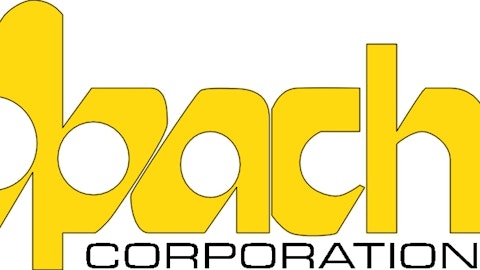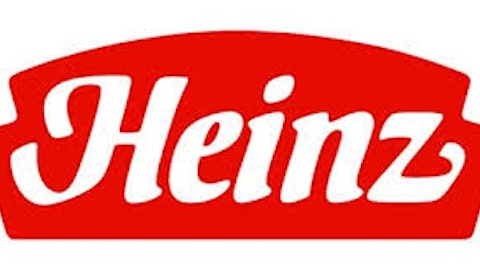As used to be said in jest about Elvis, Aubrey McClendon has left the building — figuratively, at least. But since investing is an exercise in attempting to forecast the future, postmortems regarding Chesapeake Energy Corporation (NYSE:CHK)‘s co-founder and longtime CEO’s accomplishments and foibles are now of little value. What’s needed are some answers about the opportunities that may lie ahead for the once-iconic oil and gas producer.

To forge responses, let’s note a few key elements that characterize Chesapeake’s current circumstances:
1). In spite of the difficulties that have befallen the company, it’s crucial to keep in mind that Chesapeake Energy Corporation (NYSE:CHK) essentially set the pattern for discovering, acquiring, and developing acreage in most of the key U.S. unconventional plays. Whether in the Haynesville, Utica, Marcellus, or Eagle Ford shales, the company was among the pioneering operators. As was noted on its post-release call last week, it continues to have a “tremendous asset base.”
2). Natural gas prices continue to sit at a relatively paltry $3.45 per British thermal unit. As such, management is working feverishly to increase liquids production, especially oil. In 2011 liquids constituted 17% of total output; for 2012, that share rose to 30%.
3). Acreage acquisitions and drilling programs are costly, and so Chesapeake’s balance sheet has groaned in recent years under inappropriately high debt levels. The company’s new regime is trimming its drilling and attempting to sell assets in order to strengthen the capital structure. On Monday it was announced that China Petroleum & Chemical Corp (ADR) (NYSE:SNP)’s Sinopec would pay $1.02 billion for half of Chesapeake’s Mississippi Lime properties in Oklahoma.
4). At a $20.50 Friday close, Chesapeake’s shares are now trading at about 70% below their five-year high.
No slouch as an operator
Having covered those key elements at the company, let’s glance at its current operations. In the Eagle Ford of South Texas, for instance (where total production from all operators grew by a whopping 68% year over year in December), Chesapeake, in partnership with China’s CNOOC Limited (ADR) (NYSE:CEO), grew its liquids production by 32% in 2012. The partnership’s land position in the hot play is second only to that of Houston-based independent producer EOG Resources, Inc. (NYSE:EOG). In the most recent quarter, Chesapeake connected 98 Eagle Ford wells, and management expects to hook up another 400 this year.
In the vast Utica Shale, which literally lies beneath the Marcellus Shale in several of the nation’s northeastern states — and extends from Canada into northeastern Tennessee — Chesapeake has long been the leader of the pack. Working In concert with France’s TOTAL S.A. (ADR) (NYSE:TOT), it holds a position in the big play in excess of 450,000 net acres. To date, the company has drilled 184 wells in the Utica, of which 45 are currently producing.
And as is the case in the Eagle Ford, it’s significant that the company has achieved a meaningful boost to its operating efficiencies in the Utica. Its drilling cycle times there were down 37% year over year in 2012, and its drilling and completion costs dropped by fully 27%.
Buy, sell, or ignore?
So should we take a flier on Chesapeake shares? Before you respond, let’s note the key question mark affecting the company today, and likely well into the future. I’m referring, of course, to the moribund prices being paid for plentiful, clean-burning U.S. natural gas.
The future price of gas could move higher or remain relatively flat. The difference will depend on progress that is or isn’t made toward using the fuel widely in domestic transportation, the degree of zealousness exhibited by the Environmental Protection Agency and environmentalists in opposing fracking, and the success of those same environmentalists and a corporate contingent in blocking LNG production and exports.
The “corporate contingent” element is worth a passing glance. With gas prices at about a third of their levels five years ago, new plants are actively being built in a variety of locations by companies that use gas as a feedstock and are euphoric about its price slide. For instance, Andrew Liveris, CEO of giant The Dow Chemical Company (NYSE:DOW), called in a Monday Wall Street Journal op-ed piece for an approach that would “maximize America’s new competitive advantage by adopting a measured approach to natural-gas policy.” By that he means “Let’s think twice about active LNG production.”
The Foolish bottom line
But here’s my response to the question about the wisdom of dropping a few shares of Chesapeake into your portfolio pouch: I’ve been traipsing around the broadly defined oil patch for longer than I care to admit. As such, I know that there’s one truism about the conventional energy industry: As in physics, what goes up will later come down and vice versa. Warren Buffett faced that reality in 2008, when, with crude prices headed for $147 a barrel, his Berkshire Hathaway Inc. (NYSE:BRK.A) became ConocoPhillips (NYSE:COP)‘ largest shareholder — just in time for black gold levies to plummet.
On that basis, and given Chesapeake’s asset base and the degree to which its shares have plunged from their highs, it appears that the likelihood that the stock will head appreciably south from here is about as great as the prospects for marauding Civil War Gen. William Tecumseh Sherman to make another pass through Georgia. So the downside is likely to be minimal, and I’m inclined to recommend slowly acquiring shares in this asset-rich and rapidly changing company. Then sit back and exercise patience.
The article Chespeake’s Future Is Brighter Than You Might Think originally appeared on Fool.com and is written by David Lee Smith.
Fool contributor David Lee Smith has no position in any stocks mentioned. The Motley Fool recommends Halliburton (NYSE:HAL) and Total and has options on Chesapeake Energy.
Copyright © 1995 – 2013 The Motley Fool, LLC. All rights reserved. The Motley Fool has a disclosure policy.





